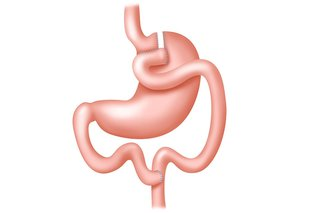gastric bypass bariatric surgery
Last edited 01/2019 and last reviewed 10/2021
Description of procedure:
- a gastric pouch is created at the top of the stomach, either by stapling or vertically banding most of the stomach or by removing portions of the stomach
- the gastric pouch is then connected to the small intestine, thereby bypassing the duodenum and some or all of the jejunum
- very effective at weight loss and may be the best option in diabetes and acid reflux (1)
- disadvantages include:
- risks of surgery are higher than for simpler operations, it is essentially irreversible and you will need to take daily vitamin supplements for life after surgery (1)
- obstruction can occur at the sites of formation of modified GI tract
- patients may develop gallstones due to rapid weight loss (2)
- flatulence and loose stools may be experienced especially if dietary changes have not been made to low fat, low sugar choices
- dumping syndrome may occur if a patient eats too much sugar, fat or
alcohol, or large amounts of food
- not considered a health risk, but can be very unpleasant with symptoms including nausea, vomiting, diarrhoea, sweating, faintness, weakness and tachycardia

Impact on nutrition:
- impacts on the absorption of iron, vitamin B12, calcium and vitamin D
- long limb bypasses may affect absorption of protein, fat, vitamin A and trace elements in addition
Reference:
- North Bristol NHS Trust. Bariatric Surgery (Accessed January 8th 2019).
- Chelsea and Westminister NHS Hospitals Trust. Weight Loss - Surgical Options (Accessed January 8th 2019)
- BOMSS Guidelines on perioperative and postoperative biochemical monitoring and micronutrient replacement for patients undergoing bariatric surgery September 2014